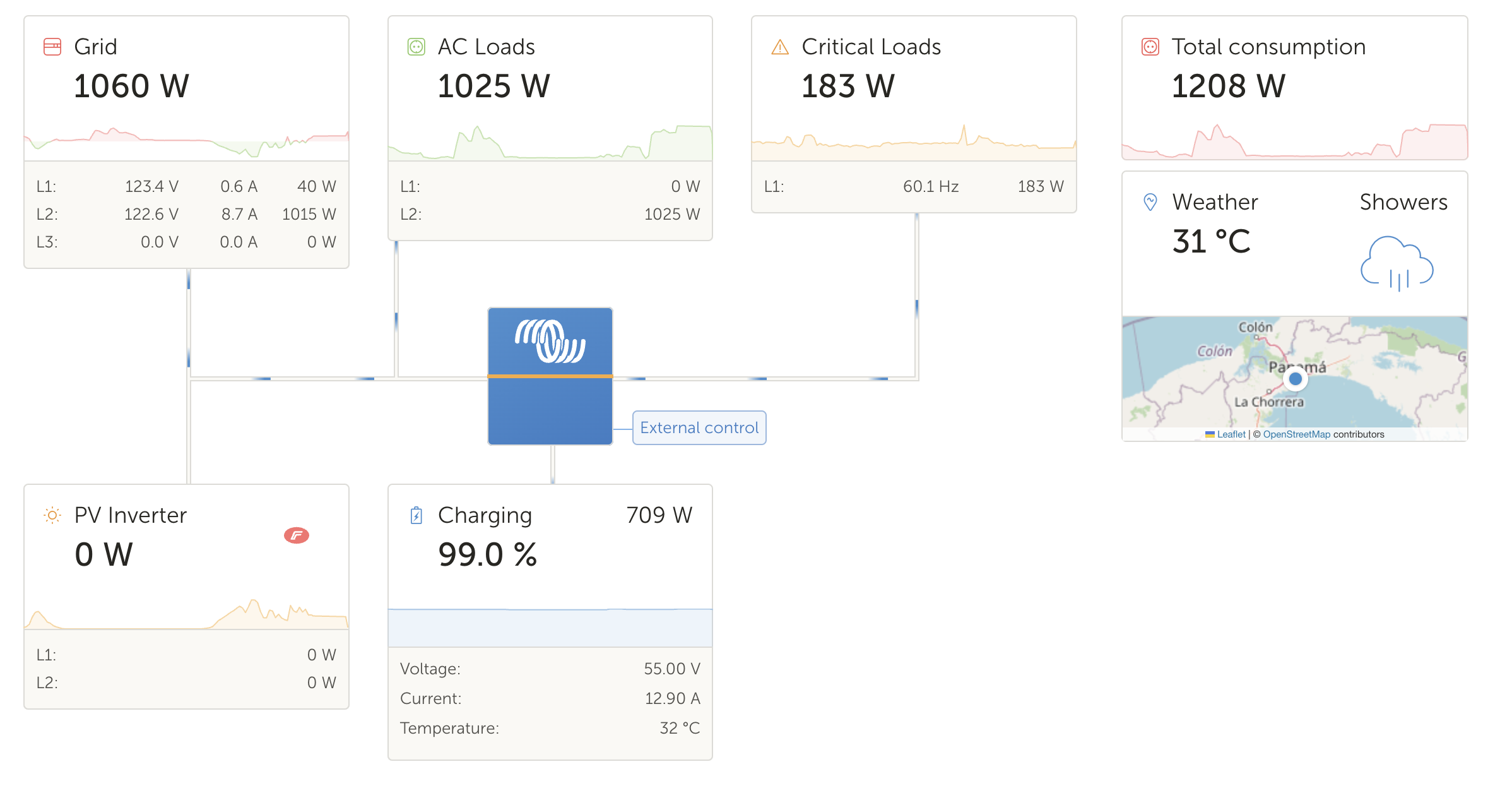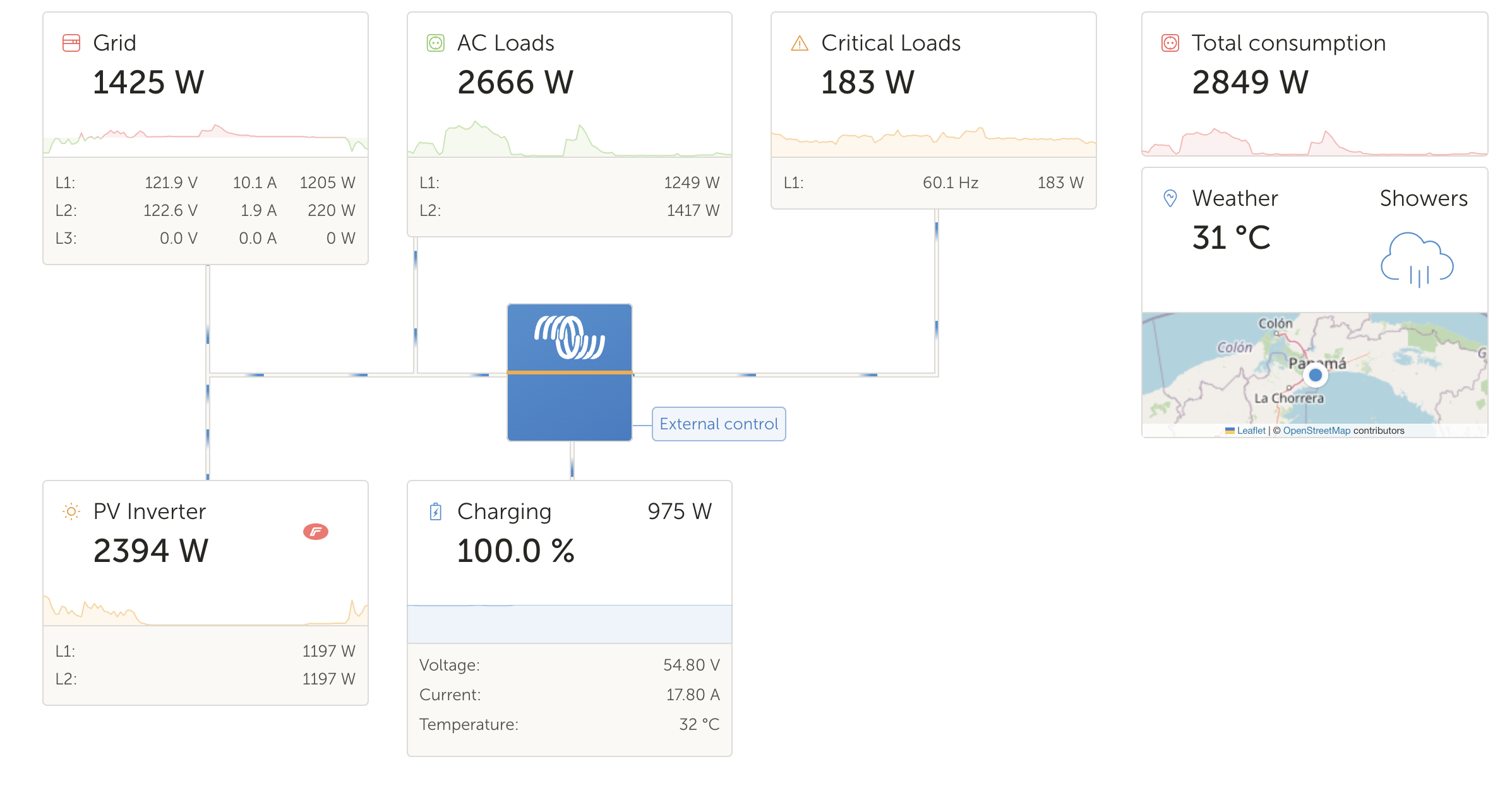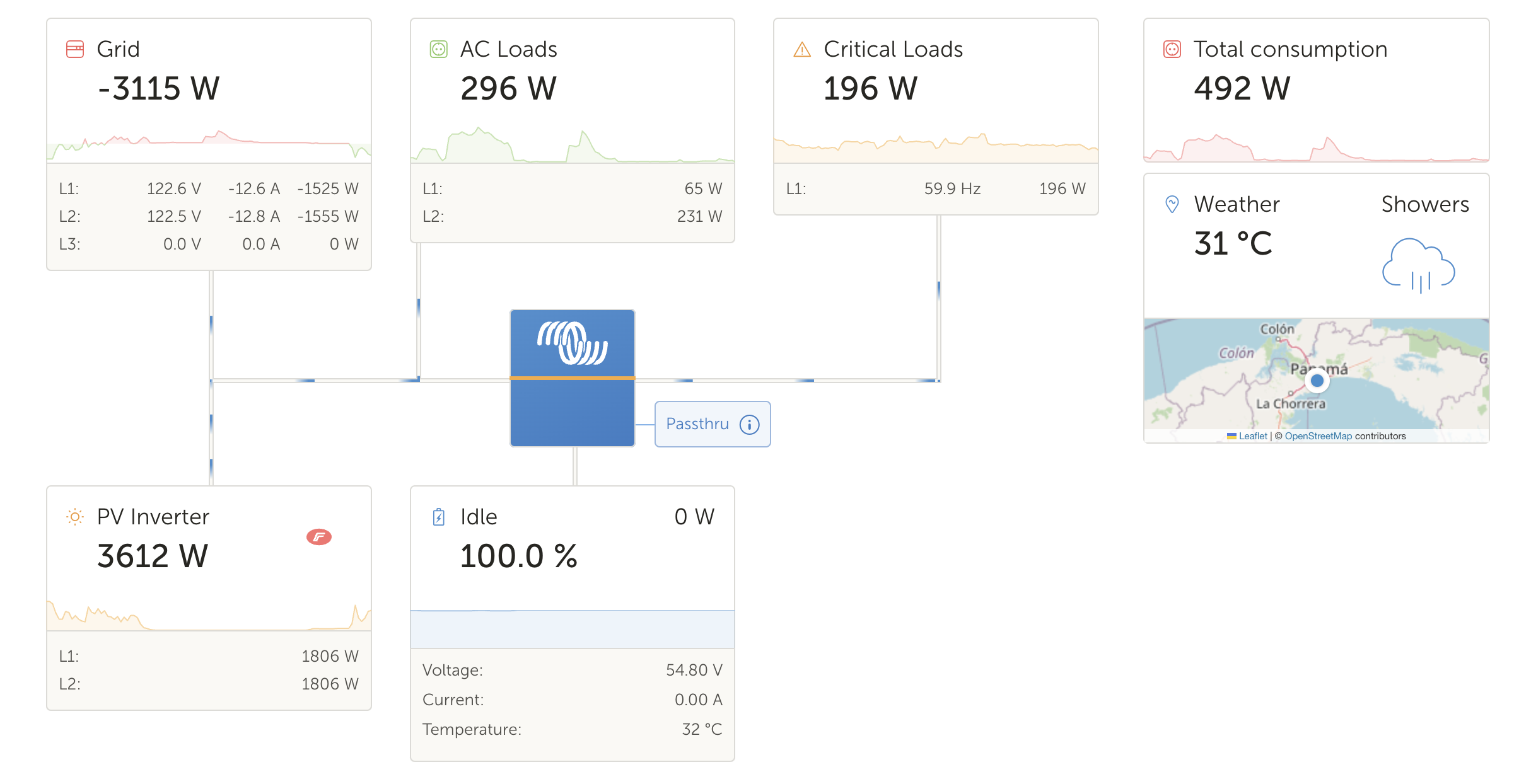Hi Everyone,
I've been running my Grid-Parallel ESS (Split-Phase) for about 6 months now and things were going well, but because I did not have a Grid Meter, it wouldn't count consumption or grid-feed-in properly.
Two weeks ago I installed an EM530 and it's working well showing consumption, but I've ran into a problem where the system is not stable unless I control it manually. Here are the issues:
- When PV production is higher than consumption, it won't inject into the grid unless I set the mode to "external control" or Pass-through.
- When PV production is higher than consumption, it will overcharge my battery and go into High DC-Voltage Alarm, unless I set the mode to "external control" or Pass-through.
- I've had to create a bunch of manual settings with Node-RED so the system half-works as I want.
Any help would be greatly appreciated...I'm at a loss manually controlling my system daily...
Here's how my system is configured:
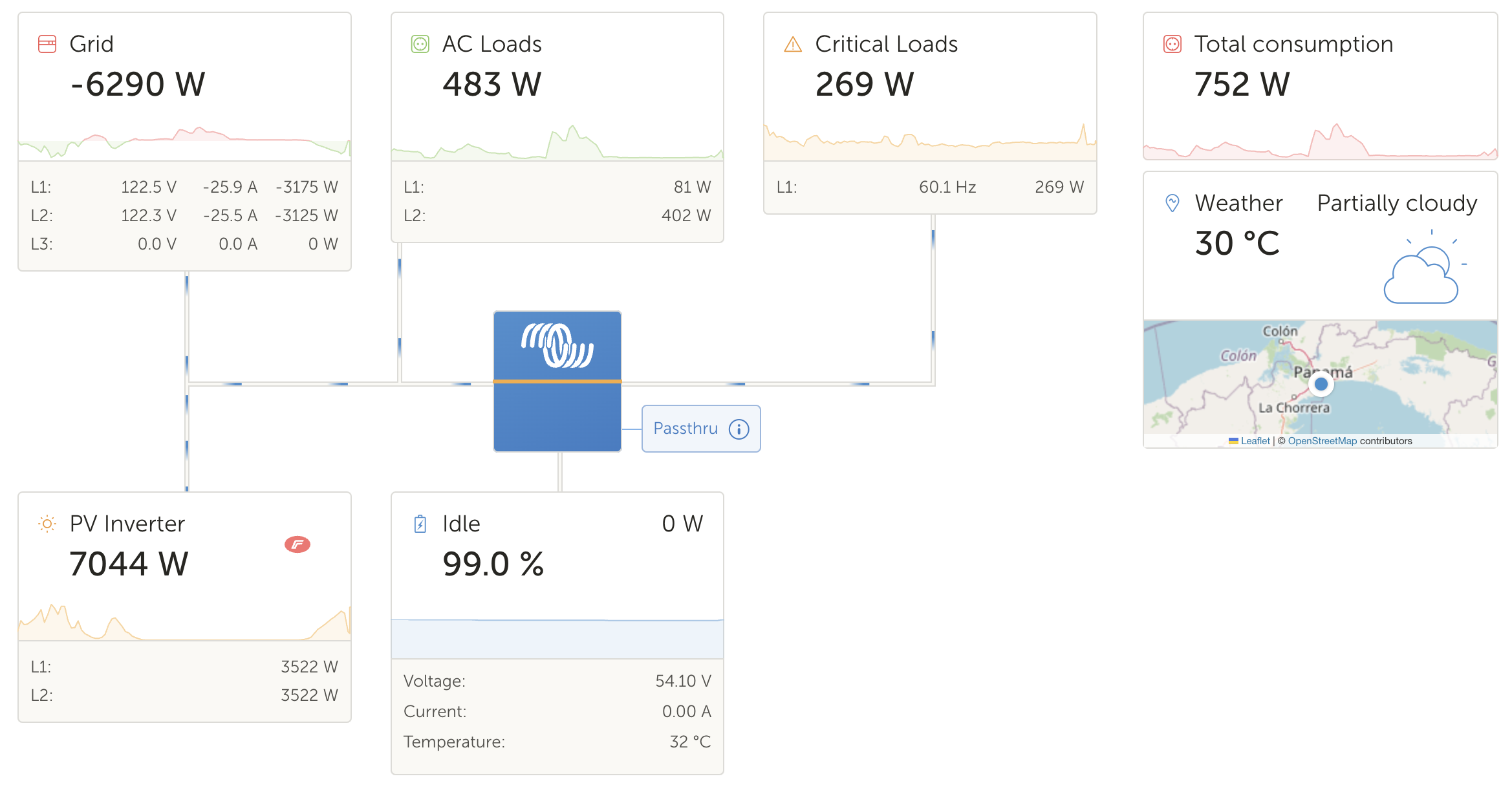


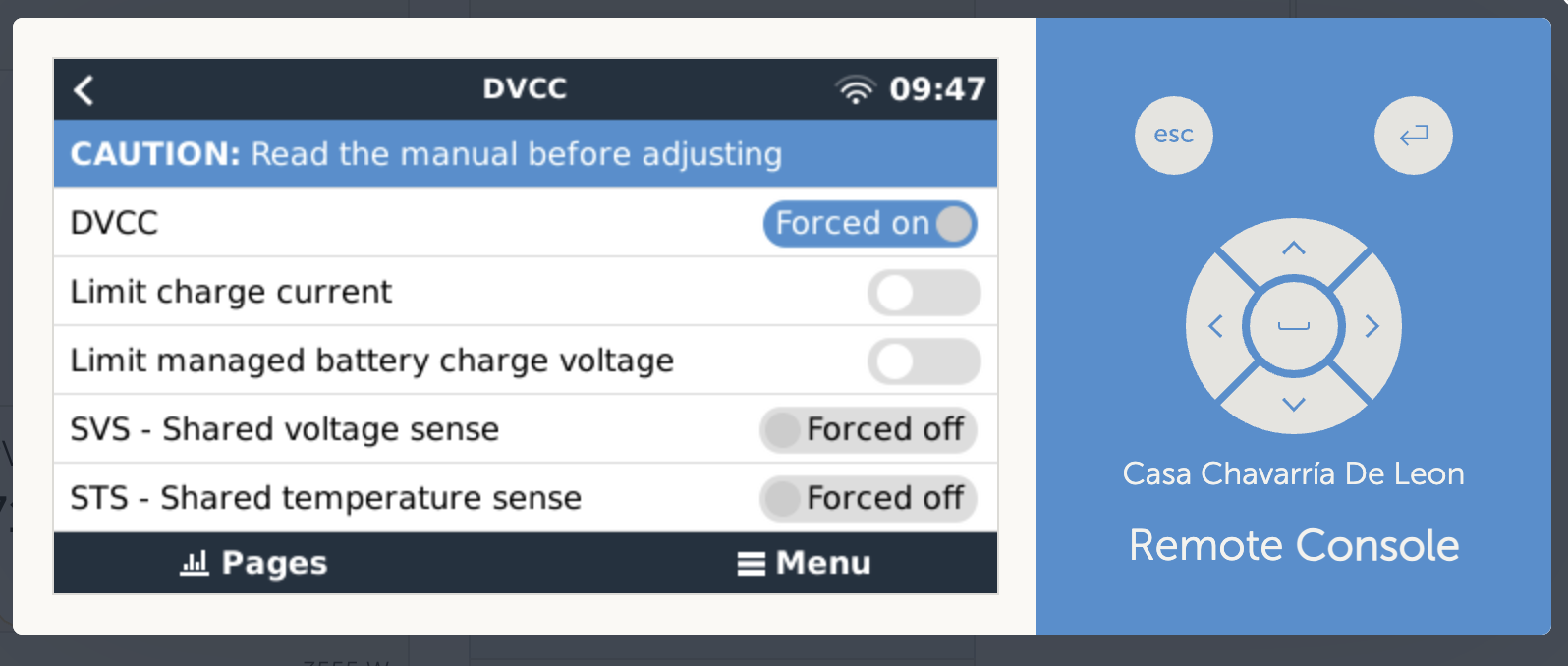
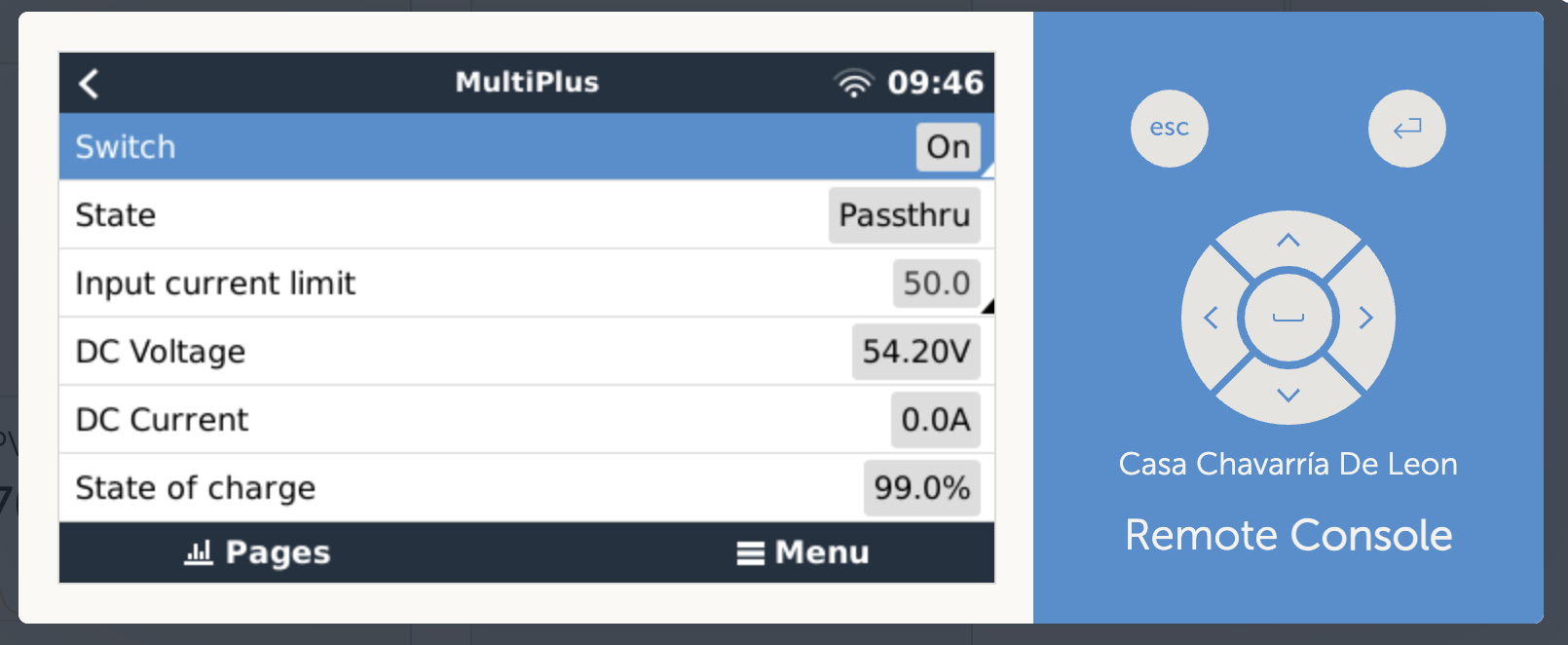
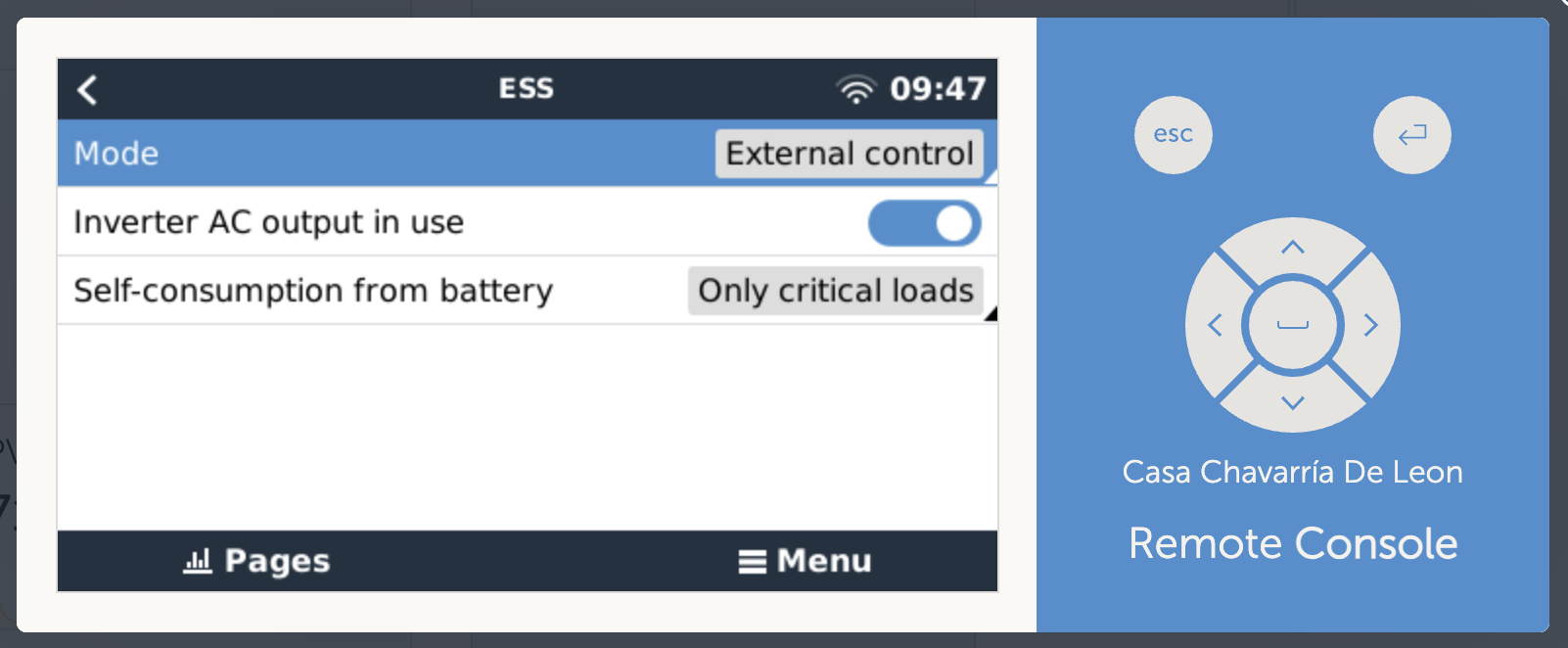 This is how it shows when I'm manually controlling it.
This is how it shows when I'm manually controlling it.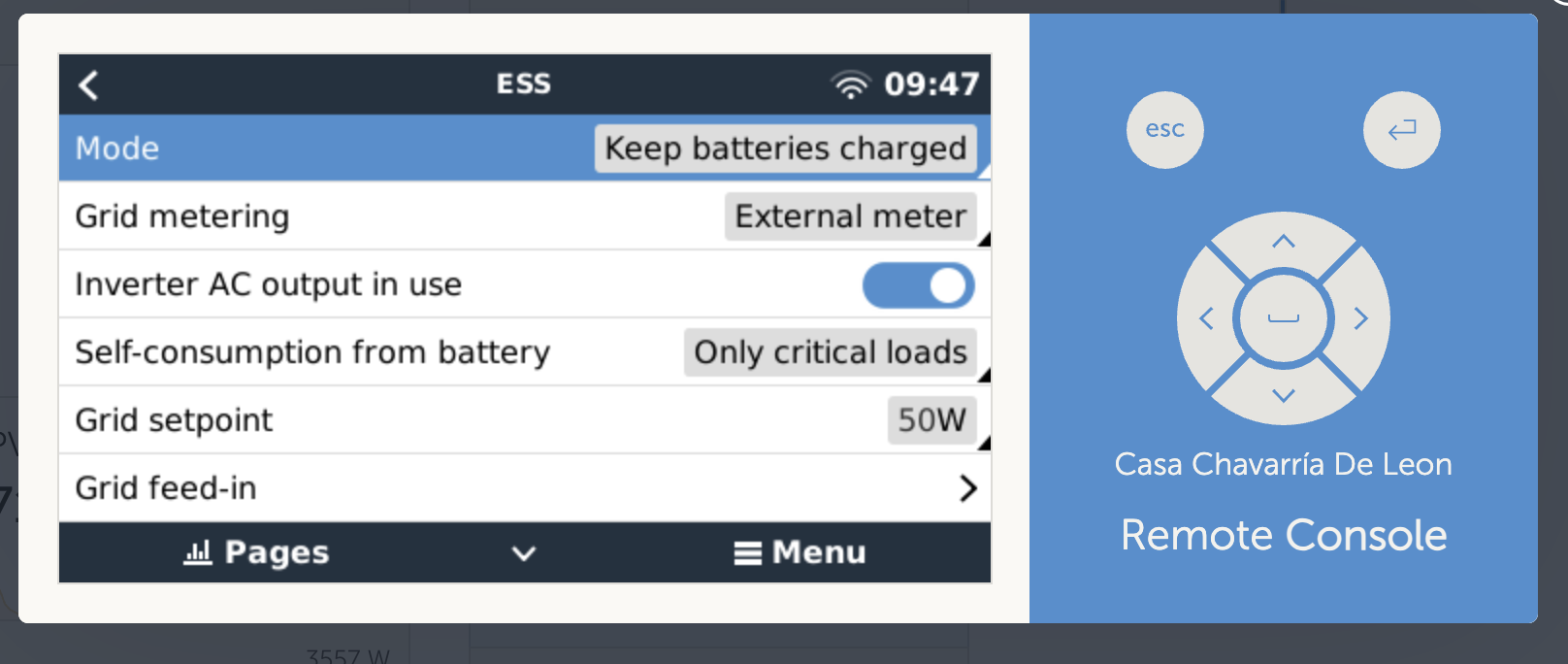 This mode won't let the system feed into the Grid, and it'll over-charge the battery if full.
This mode won't let the system feed into the Grid, and it'll over-charge the battery if full.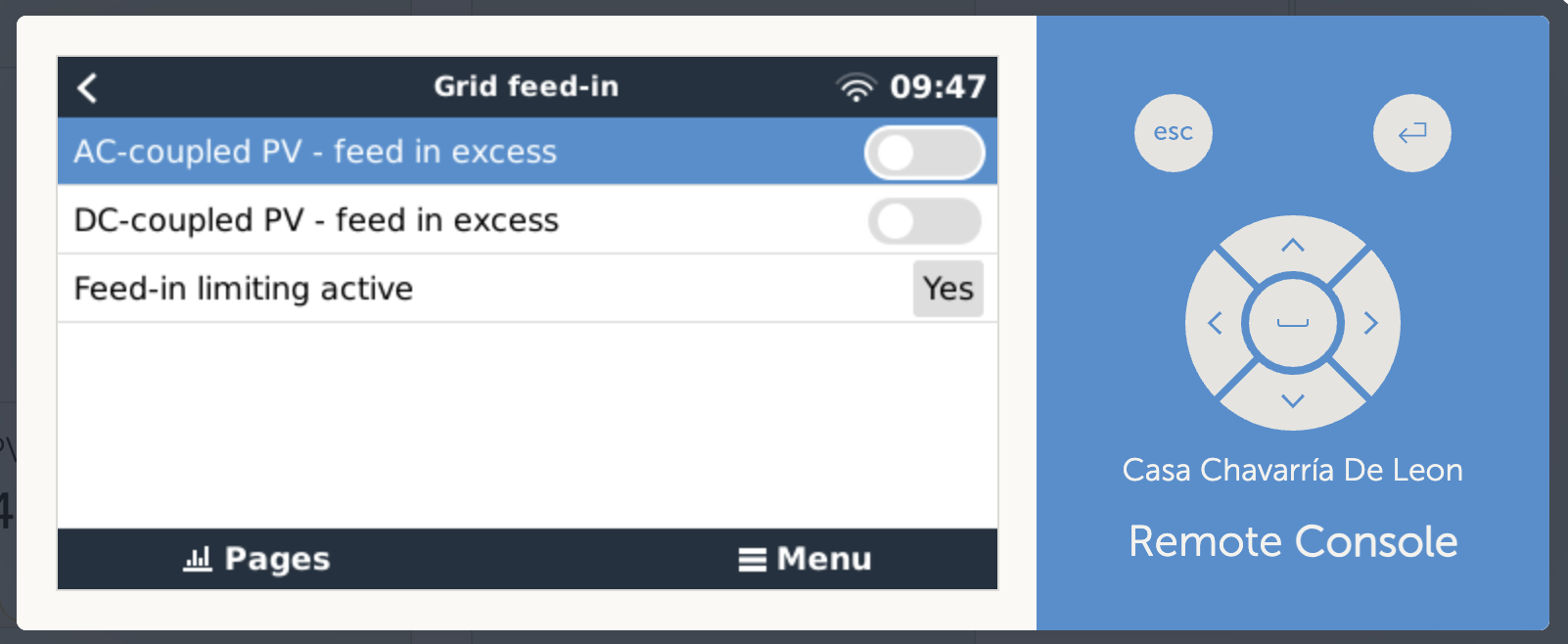 I don't know how to set it so it won't have Feed-in limiting...I can feed as much as I want into our Grid
I don't know how to set it so it won't have Feed-in limiting...I can feed as much as I want into our Grid

 Custom controls so I can avoid High-DC Voltage Alarm by forcing system into Passthrough mode.
Custom controls so I can avoid High-DC Voltage Alarm by forcing system into Passthrough mode. Forcing "Disable Feed-In", as it's the only way to get the system to actually feed into the grid.
Forcing "Disable Feed-In", as it's the only way to get the system to actually feed into the grid.

